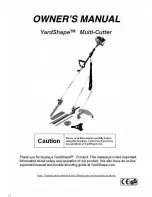
AP Blot – SERVICE MANUAL
SECTION 6
SCHEMATIC DIAGRAMS
Doc. N° MDS-AP-26-00-02
Rev.01
Date: 02.04.2009
Pag. 111
5.1 DILUTION / DISPENSATION
PROBLEM
PROBABLE CAUSE
SOLUTION
Probe not in correct position
Check motor, cable, and Dilutor card
and replace parts as necessary.
a) Liquid not dispensed
Probe goes into position but aspirates
air and then liquid cannot enter
container
Check tubing, attachments and syringe
and replace defective parts.
Check liquid level. Add if necessary.
b) Liquid dispensed only in first
positions
As probe approaches liquid container it
stops at a level where it aspirates first
air then liquid
Regulate LT parameter, or replace the
probe (liquid sensor damaged).
c)
Probe drips
Air enters Probe
Check tubing, attachments and syringe
and replace defective parts.
d) Loss of liquid at the base of
syringe
Tip worn out
Replace tip
e) Air bubbles present in aspirated
sample
Probe tubing or valve are dirty or worn
out
Replace probe tubing or valve.
f)
False alarm of lack of liquid
Liquid sensor not sensitive enough
Regulate LT parameter, or replace
probe (liquid sensor damaged).
g) Tip stops before contacting liquid Liquid sensor too sensitive
Regulate LT parameter, or replace
probe (liquid sensor damaged).
h) Syringe does not aspirate liquid
Air in circuit
Check tubing, attachments and syringe
and replace defective parts.
Peristaltic pump stopped
Check motor, cable and Dilutor card
and replace damaged parts if
necessary.
Peristaltic tubing worn out
Replace peristaltic tubing
i)
No water in the probe washing
well
Hydraulic circuit clogged
Check for kinks in tubing and undo
them.
Peristaltic tubing worn out
Replace peristaltic tubing
j)
Probe washing tank full of water
Hydraulic circuit clogged
Check for kinks in tubing and undo
them.
k)
The aspiration probe doesn’t
aspirate
The 220V oscillating pump does not
work
Tubing disconnected or blocked
Replace 220V oscillating pump
Check tubing and replace if necessary




































